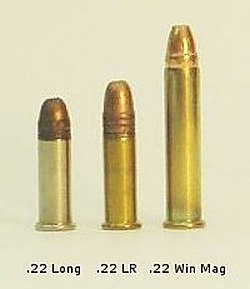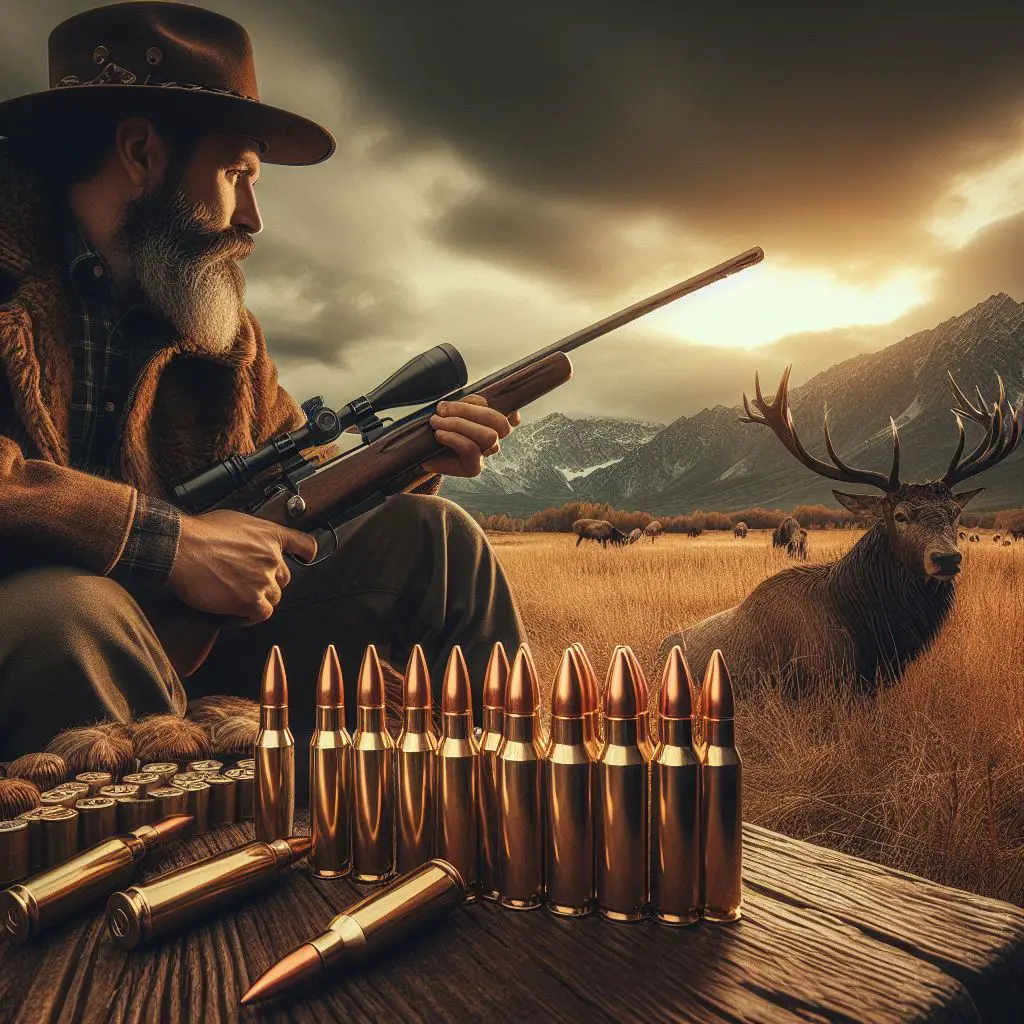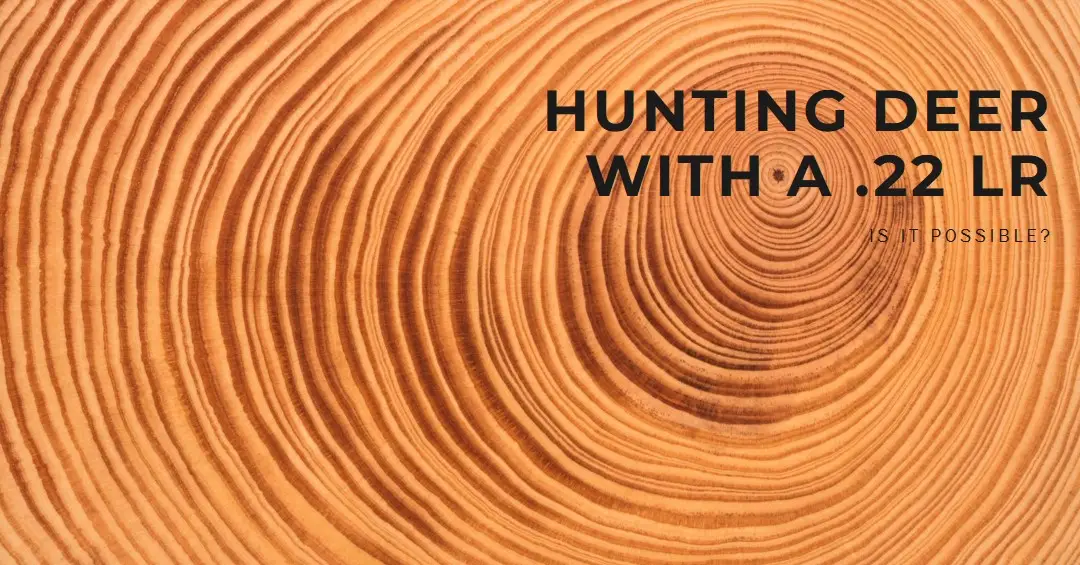The .22 Long Rifle (LR) is one of the most popular and widely available ammunition rounds. Known for its low recoil and quiet sound signature, the .22 LR is well-suited for target practice, small game hunting, and pest control. But what about pursuing larger animals, like deer? Is using a .22 rifle for deer hunting practical or ethical?
This article examines if a .22 can effectively and humanely harvest deer. We will analyze ballistic capabilities, legal considerations, shot placement, and other ethical factors. By understanding the challenges and limitations, you can decide if using a .22 LR for deer hunting aligns with your skills and values.
Background on the .22 Long Rifle Cartridge

Before analyzing the .22 LR’s deer hunting capabilities, let’s review some background on this ubiquitous cartridge:
History
Dating back to 1887, the .22 Long Rifle round has the longest continual production run of any cartridge. The mild shooting, economical rimfire round quickly rose to popularity for recreational shooting and small game hunting, cementing its iconic status in America’s firearms culture.
Common Firearms
While modern .22 LR semi-automatic rifles and handguns are popular, the cartridge largely developed alongside classic bolt-action and single-shot rifles like:
- Marlin Model 60
- Ruger 10/22
- Remington Model 572
- Various break barrel and rotating block single-shot rifles
These well-loved .22s helped new generations learn marksmanship.
Ballistics
The .22 LR drives a light bullet at modest velocities. Typical factory loads fire:
- Bullets: 25-40 grain (1.6-2.6 grams) hollow points or round nose lead bullets
- Velocity: Between 1,100-1,800+ fps depending on barrel length
- Energy: Roughly 102-180 ft-lbs depending on load specifics
Compare this to centerfire deer cartridges firing bullets over 100 grains at 2,000+ fps and generating over 1,000 ft-lbs of energy. The .22 lacks the high velocity and energy for ethical shots on medium to large games.
Now that we have covered some .22 LR essentials, let’s move on to analyzing it for deer hunting.
Analyzing the .22 LR for Hunting Deer

Hunting whitetails and other deer species requires reliable performance from both firearm and hunter. Ethics also dictate we only take high-probability shots for clean kills. Unfortunately, several factors make successfully harvesting deer with a .22 LR a tall order.
Legal and Ethical Considerations
No state allows deer hunting with .22 rimfire rounds. Using the .22 LR on deer faces major ethical and legal obstacles:
- Prohibited for Big Game: All state hunting regulations expressly prohibit any .22 rimfire cartridges for deer, bear, elk, and other medium to large game.
- Inadequate Energy Levels: The maximum 180 ft-lbs of muzzle energy falls far below the recommended 1000+ ft-lbs for deer-sized animals.
- No Legal Obligation to Recover Animals: With unreliable terminal performance, many injured deer may be lost and left to suffer. This fails hunting’s ethical standards.
- Risks to Public Safety: The low weight, high velocity .22 LR risks ricochets, even off vegetation. Stray bullets threaten bystanders and livestock.
These prohibitive regulations, combined with marginal ballistics and ethical concerns, rule out the .22 as a deer hunting cartridge. Some still wonder about using it in survival situations, so let’s review further performance factors.
Terminal Ballistics
Bullets must penetrate vitals organs and disrupt tissue to quickly incapacitate game. The .22’s terminal performance causes low recovery rates according to wildlife forensics:
| Terminal Ballistic Performance | Evaluation |
|---|---|
| Penetration | Modest tissue damage leaves a limited blood trail compared to expanding centerfire rounds. Higher likelihood of lost deer. |
| Tissue Damage | Narrow wound cavity limits hemorrhaging. Small bullets may fail to expand due to insufficient velocity. |
| Blood Trail | A narrow wound cavity limits hemorrhaging. Small bullets may fail to expand due to insufficient velocity. |
| Incapacitation | Without reliable penetration or excessive dump of energy into tissue, deer may bolt and evade recovery. |
Shot Placement Challenges
Given the marginal terminal performance, precise bullet placement becomes critical. But several factors make accurate shot placement difficult:
- Small projectile size
- Light weight affected by wind drift
- Rain, snow, and other adverse conditions
- Deer may notice noise signature and bolt at sound of trigger pull
These collective ballistic limitations rule out the .22 LR for deer hunting purposes. Shots at vitals risk wounded game lost to suffer and die slowly.
Anecdotal Success Stories
Occasional anecdotes on internet forums describe successfully harvesting deer with well-aimed .22 headshots. However, these rare outcomes generally involve:
- Extremely skilled shooters
- Deer within 25 yards
- Perfect broadside or head-on shots
Such contrived scenarios don’t justify ignoring ballistic science and ethical standards. Most hunters in real world situations can’t consistently make perfect headshots under stress. As one comment sums up, “Anyone can get lucky now and then, but luck is no excuse for poor decision making.”
In short, no ballistic evidence suggests the .22 LR generates consistent, humane outcomes on deer, even with perfect shot placement. Let’s now move onto larger economic and environmental considerations surrounding ammunition choice.
Broader Impacts of Choosing Larger Calibers

The above performance issues demonstrate why regulations universally prohibit rimfires for big game hunting. But legal centerfire cartridges have another advantage: accountability through conservation funding frameworks.
Revenue for Conservation
American hunters provide the bulk of conservation funding via the “User Pays-Public Benefits” approach. Key revenue streams include:
| Source | Funding Generated |
|---|---|
| Excise Taxes | An 11% federal excise tax on firearms and ammunition flows to state agencies via the Pittman-Robertson Act |
| Hunting Licenses | State license fees fund habitat programs and public lands. |
| Tags and Stamp Sales | Elk tags, duck stamps, etc. facilitate population monitoring while funding conservation. |
These programs generated over $1 billion for wildlife agencies as of 2020. Taxable ammunition purchases allow hunters to self-fund public resources we all enjoy. The .22’s rimfire design exempts it from these taxes.
Motivation for Conservation
Ethical hunters deeply value preserving wilderness areas and maintaining sustainable game populations. Paying higher license fees and ammunition taxes incentivizes hunters to fully utilize tags. Funds ultimately circle back to improve habitat and hunting opportunities.
So choosing regulated centerfire rifle calibers aligns with a profound conservation legacy. Ballistic limitations simply rule out the .22 LR safely and consistently harvesting deer.
Alternative Small Game Hunting Options

While unsuitable for deer, the .22 LR remains an outstanding squirrel, rabbit, and other small game cartridge. Its mild report and accuracy makes it pleasant for daylong hunting sessions. Before dismissing rimfire rifles, consider pursuing more appropriate species based on your state’s regulations. Just remember to match ammunition performance to quarry size for clean, ethical kills.
Final Thoughts
In the end, the recreational shooter faces no quandary around using a .22 LR on deer. Unequivocal ballistic evidence coupled with legal prohibitions renders it invalid based on objective analysis. While specialized centerfire calibers have distinct advantages, од still cannot dismiss the .22’s enduring legacy. Tallying up countless hours of fun plinking, competitive marksmanship, and small game pursuits, the iconic rimfire proves no one cartridge can do everything flawlessly.
But for pursuing whitetails, muleys, elk, and other large game species, we owe it to the animals to choose reasonable calibers. Regulations and ballistic standards evolved to address issues like those posed by marginally potent rimfires. While new modern .22 centerfire rounds show promise, rimfire rounds fail tests for consistent ethical performance.
In the end, hunters themselves remain the final safeguard through principled shot selection. So whether carrying on with a .22 LR or centerfire rifle, pledge to make effective terminal ballistics and ethics your guide.
Frequently Asked Questions
Still have questions surrounding using a .22 LR on deer? Here are answers to some common inquiries:
Would a .22 LR work for mercy killing an injured deer?
Legally and ethically, no. Deer deserve a quick kill when possible. Most hunters carry a knife for swiftly puncturing the heart or jugular vein on mortally wounded deer as the only allowable means of dispatching crippled game.

